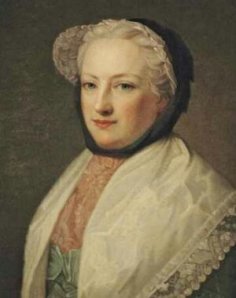You are currently browsing the category archive for the ‘Broughton-in-Bromfield’ category.
North and west of Brynmally colliery lies an attractive area of small, wooded hills, tiny deep-banked lanes, and old farmhouses, with a few relics of an industry that it is now difficult to imagine ever being here. The parishes of Wrexham, Gresford and Hope meet at this point, the latter lying across the Cegidog to the north. Much of the area is now given the name of Ffrwd – over the years it has also been spelt in the Anglicised form “Frood”, the latter particularly applied to John Thompson‘s colliery and ironworks which once occupied land at the very extremity of Brymbo township.
Read the rest of this entry »
A few months back, I looked at the early history of the colliery at Brynmally, formerly one of Brymbo’s main sources of employment, from its probable founding in the 18th century by Thomas Brock and Charles Roe to its development under the Kyrke family, who lived at Brynmally Hall. The financial troubles of George Kyrke led to the sale of the property in 1849 to Thomas Clayton, a young entrepreneur from Lancashire with existing experience and marital connections in the coal industry.

Ann Primerose, nee Drelincourt, was along with her mother largely responsible for the charity school and church at Berse.
Berse Drelincourt is not in Brymbo township, but is one of the main landmarks on the old road between it and Wrexham. North of the house stands a small church of the same period, without a specific dedication though sometimes called ‘St Paul’. The church, unusual in a landscape of mainly 19th century chapels, recently closed and is now converted to a house. The church and house were both built by the same family, the Drelincourts; though they themselves lived in London or elsewhere much of the time, the presence of the church and an associated charity school, set up in and around the house, ensured that their influence lingered in the area long after their departure.
My previous post discussed the early history of the Brynmally estate and its colliery – which started operation in around 1753 or 1770, depending on which source you consult. We arrive on firmer ground with the appearance of the coalmaster Richard Kirk during the 1770s. Kirk, who ran or was involved with a number of pits in and around Brymbo and Broughton, was to be central to the district’s mineral developments for the next fifty years.
Read the rest of this entry »
Despite the closeness of Brynmally to the modern-day village of Brymbo, it is not actually in the old township; it lies just over the border, in Broughton. Nevertheless the colliery at Brynmally employed many Brymbo men over the years, and the residence of its owners, Brynmally Hall, was one of the area’s most notable houses. Its name, which mean’s Mary’s (or Molly’s) Hill, is more correctly written as Bryn Mali, though the anglicised version is probably more familiar. The hill, such as it is, forms a low ridge of farmland lying east of Clayton Road and marked by the distinctive tower of the Wrexham-Rhos transmitter. The house of Brynmally lay just north-east of the hill’s highest point, with the colliery a little further to the east beyond that.
The land in question was once attached to the Lower Halcock or Halcog Issa tenement, itself one of the farms belonging to the Gyfynys estate. The Gyfynys had been owned by the Powell family since at least the 16th century, but by the early 18th century the Powells had departed the area and their estates were broken up to satisfy various inheritances. Much of this land, including Lower Halcock, then in the tenancy of Thomas Rogers, came into the possession of a Mr James Morgan of Stansty, and after the latter’s death in 1760 passed to his heirs. Although mining was undoubtedly taking place on surrounding land in this time – with pits at the Lodge and on the Broughton Hall estate – there is not much evidence of either the house or the coal pits at Brynmally, although there has been a suggestion of a reference to the pit on the estate as early as 1753, during Morgan’s ownership. That was soon to change, however.
